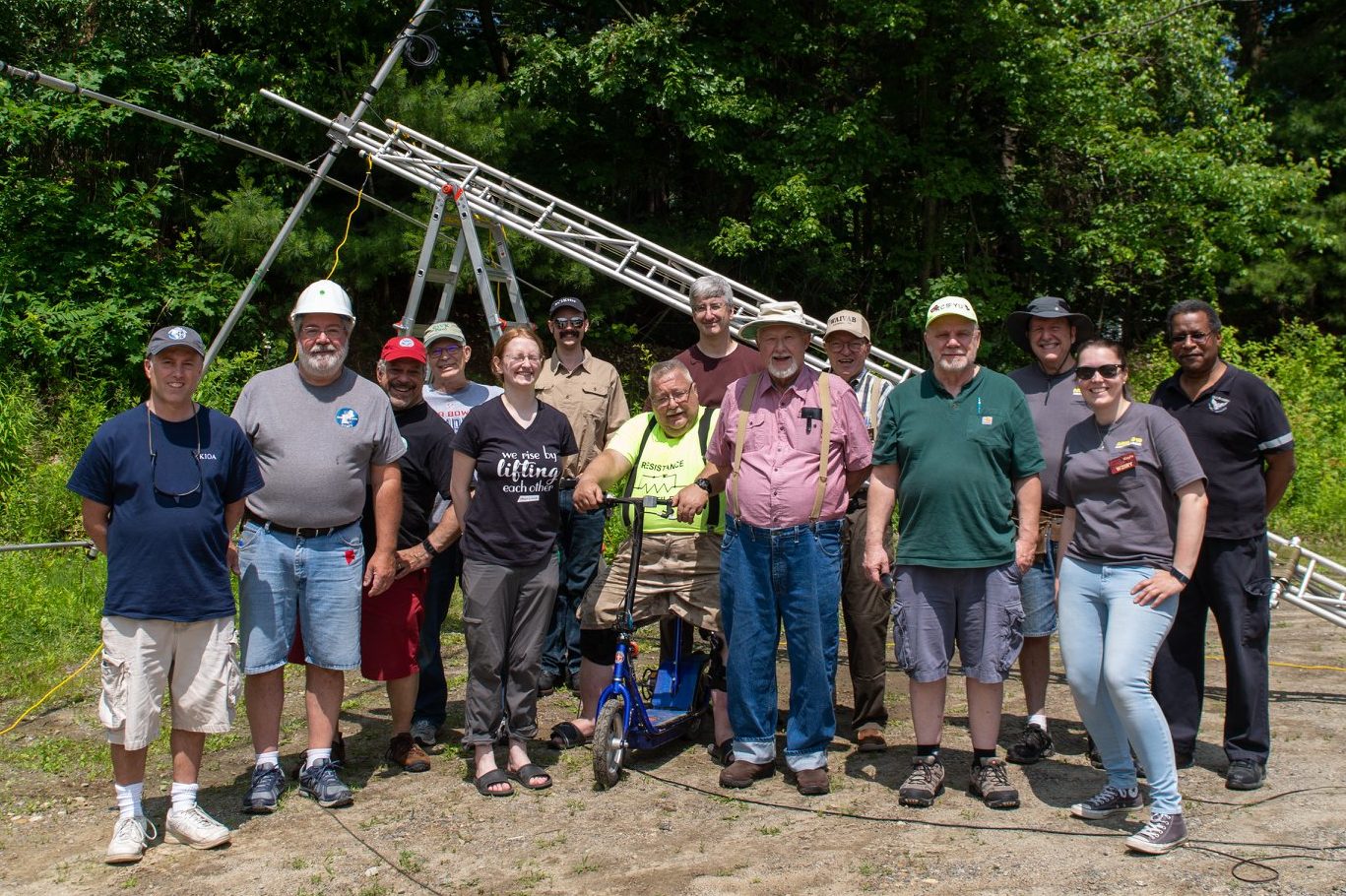help my team get the station working , andmentor new ops.
As the hours passed and I spent time with new ops, young and old, here are five things I observed and learned.
1. As mentors, we often assume way, way too much.
When I started working with people who were interested in learning what we were doing, I tried to interact with them on what I felt was a very basic level. But, I soon learned that ‘basic’ for me was much too advanced. I was assuming a level of knowledge that just wasn’t there. For example, as we were calibrating the rotor for the VHF/UHF array, I asked one of the newer hams which way the antenna was pointed. After a period of confusing dialog, I realized that this individual did not know how to determine the direction of a yagi by looking at it. I slowed down and explained the physical attributes of a yagi – ‘boom’, ‘elements’, shorter and longer; when we were done, he was enlightened.
2. There seems to be a nearly infinite supply of incorrect information out there.
SWR. Grounding. Propagation. Antennas. Operating practices. Discussions with new hams often reveal an incorrect understanding of the most basic concepts. Where does all this misinformation come from? The primary source seems to be the internet. It’s easy to understand the role of the internet. Anyone can post anything, anywhere. As a result, there are so many internet information sources from which an inquisitive explorer can choose. But, that’s where the trouble begins. A google search on just about any topic reveals a mixed bag of information quality. Which information is credible? Which should be avoided? Even for those sources that meet an acceptable level of accuracy, is the information presented well and consumed correctly by the viewer?
And, what about eager, more experienced hams at the local club, on the repeater, in the New Hams Facebook group or at the Saturday breakfast meeting? Unfortunately, some faulty information and guidance gets passed along by the most well-meaning hams. How do enterprising new hams separate fact from fiction? As a community, we need to figure out how to help them sort out this problem.
3. Mentoring is all about empathy.
Being inside your student’s head makes all the difference. If you can feel what she’s feeling, you can better anticipate her immediate learning challenges and needs. As an experienced ham, its easy to forget that all the things we now know as second nature are new and confusing obstacles for a new or prospective ham. You can recite the phonetic alphabet backwards. The flow of a typical CW QSO is so ingrained, its as if its built into your hand; your brain doesn’t even have to get involved! But, your student is experiencing all this for the first time. As you introduce a new experience, you have to slow down the pace, watch and listen to your student and tailor your approach accordingly.
4. Real learning happens locally and hands-on.
As we sat in front of the HF operating position, I happened to be closer to the radio, and the operator I was training was closer to the computer. We were working stations on SSB. He was writing calls down, getting the exchange smoother with every contact, entering QSOs in the N1MM logging software. It was all new to him. He needed to learn the important keyboard functions – Tab to cycle through the fields, Alt-W to clear, Enter to confirm and save a completed QSO. Yes, one can certainly memorize those keystrokes. But, actually entering them on the keyboard, getting comfortable with how the software feels, learning the rhythm of QSO, can’t be done without actually experiencing it. No video or written explanation can substitute for this kind of learning; it has to be hands-on.
5. The ‘Magic of Radio’ is powerful and timeless.
That smile. That smile that comes with successfully conquering a new challenge. Seeing the technology work as planned. You hear your own call coming back over the ether. A report of excellent signal strength prints on the screen. Your homebrew mast adapter works perfectly – for the whole weekend. That smile is the payoff on all you’ve invested. It’s the true manifestation of the magic of amateur radio. It’s that feeling that hams of every age experience. It’s what keeps us coming back year after year, decade after decade. And it’s the secret sauce that powers great mentoring relationships that cross generations.
Be a ham radio mentor. It’ll be your next chance to smile.

Jim is a technologist, an innovator and a business builder. He most enjoys helping teams take on big challenges to achieve big goals.










